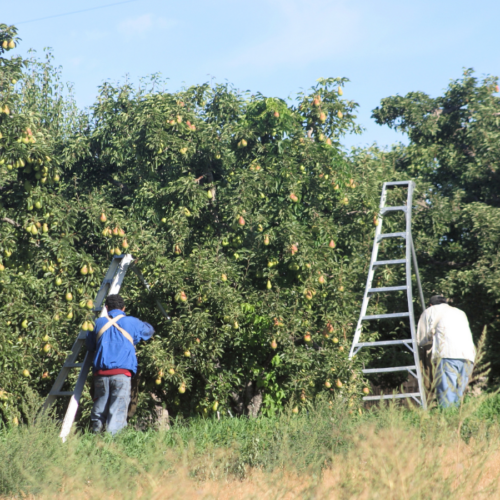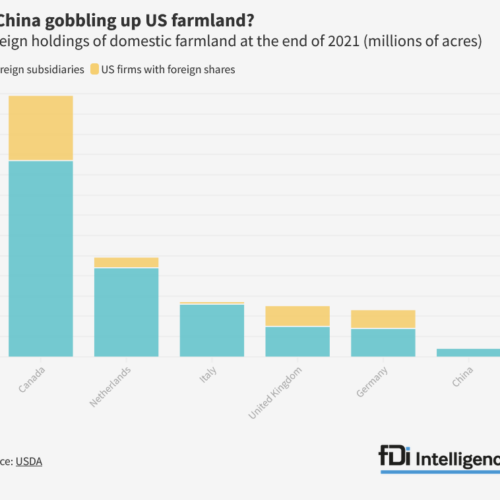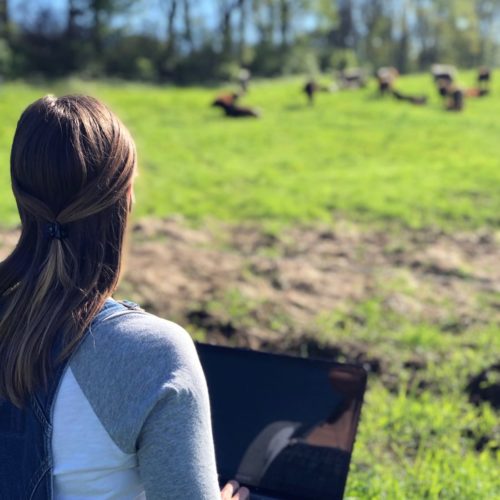Understanding the Margin Protection Program (MPP)
You may have heard complaints from our dairy farmers about the Margin Protection Program (MPP) and how the insurance program has been a failure. Let’s take a look at the program, what it was meant to do, and what the problems are.
To be sure, our dairy farmers have had their share of low milk prices, the up and down cyclical nature of prices that the farmers receive for their product, and the high cost of producing milk in the Northeast. We covered this part of the story in our January blog. And this year many in our region have been hit with unprecedented drought that has stunted the crops needed to feed the herds. On top of this, we have the highly touted new insurance program fail the farmers, which is adding salt to the wounds.
When we were preparing to tackle this blog, we both thought we understood the MPP. However, as we went to put pencil to paper (or fingers to keyboard), we found ourselves having a hard time explaining the program. So we did what we are good at — we set off to research the issue. There were many explanations being bandied about, all of which were long, obtuse, and leaving one scratching one’s head and saying, “Huh?” We need to thank a friend, Jay Phinizy, former USDA–FSA director in New Hampshire and chair of the House Ag Committee, for his patience in making sure we understood the issue. We hope we are able to explain it more simply than most of the attempts we have read.

Dairy cows in the pastures before and during sunrise at Foremost Dairy Center on June 25th, 2014. Photo by Morgan Lieberman | © 2014 - Curators of the University of Missouri
We will start with a little history.
The MPP came about in the 2012 Farm Bill, which was actually not finalized and signed into law until 2014. Many in the dairy industry had asked for an insurance program to replace the previous MILC (Milk Income Loss Contract) safety net program. Congress wanted to eliminate the MILC program because it was viewed as a subsidy for dairy farmers. In fairness, many of the dairy producers also preferred to pay into a program meant to protect them from either low milk prices or high feed costs, rather than the MILC handout. The MPP insurance program became a reality in the last Farm Bill, and MILC was repealed. (There are other programs for dairy, but we will concentrate only on the MPP in this article.)
So how does the insurance program work – or how should it work? The program on one side of the ledger takes the “all milk price” as the revenue for the program, and uses the Midwest feed price on the Chicago Mercantile Exchange as the expense side of the equation. The difference between the revenue and the expense is the “margin.” As of this writing, those numbers are $17.05 per cwt (a cwt — or hundredweight — is 100 pounds of milk), $7.89 in feed costs to produce that 100 pounds of milk, resulting in a margin of $9.16. The margin is the important number.
The MPP provides insurance to protect the farmer against the margin falling below a specific level. The farmer needs that margin to be reasonably high, because they have plenty of other costs to cover, such as heat, electric, labor, taxes, and on and on. You can purchase MPP to protect that margin from going below $8.00 (the top level) or from falling below $4.00 (the lowest level). You can buy protection in 50-cent increments anywhere between those numbers. The $4.00 is premium free, except for a $100 annual fee. Above that, premiums go up and are based on actuarial data.
Even if you bought the most coverage of protection at the of $8.00 margin, you would receive no payments because the margin is $9.16. Should milk prices drop by more than a $1.16, feed prices rise by an equal amount, or some combination of the two, the coverage would kick in if you had bought in at the high margin level.
So what is the problem with MPP? There are several. The “all milk price” is a national average price for milk, and the “feed price” is the Midwest price on the futures market. Neither of those is reflective of our Northeast region. Milk prices vary in different regions of the country and feed costs vary from region to region. This government insurance program is a one-size-fits-all average, and does not vary by region. Therefore, it is not taking into consideration the different cost factors that vary by region. For example, it costs more to operate a dairy farm in New England than it does in Louisiana.
Another problem is that the margins are calculated in two-month increments. Let’s assume a dairy farmer bought in at the $8 margin level. If the margin calculated for January is $7.50 and in February the margin went back up to $8.52, the two-month average is $8.01, and the farmer would receive nothing. However, if the margins were calculated one month at a time, the farmer would have had a payout for January but not February. Lastly the margins have been relatively steady (in the $9 to $10 range), so there have been very few payouts. Even though dairy prices are extremely low, prices for Midwest corn, soybean, and other grains are low as well. As a result, the numbers we hear are that the program has collected $78 million in premiums and paid out $11.2 million. Using New Hampshire as an example, only nine of the 101 dairy farms in that state received an MPP payment.
It is clear that the system is not working for the dairy farmer in our region. Congress has just begun its negotiations on the next Farm Bill. We need to make sure the needs of our Northeastern dairy farmers are represented. We will be facilitating discussions for members of our region to develop specific wording for changes we seek to the existing MPP subchapter in the Farm Bill (Title 7-AGRICULTURE, CHAPTER \ 115-AGRICULTURAL COMMODITY POLICY AND PROGRAMS, SUBCHAPTER III-DAIRY Part A-Margin Protection).





